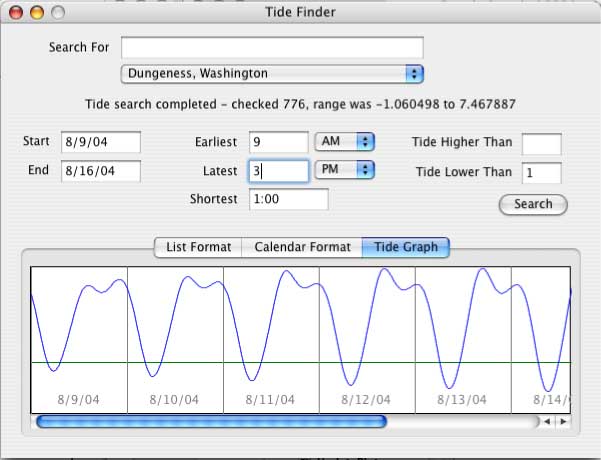

Should you slip while negotiating the jetty rocks and end up in the inlet water, getting free of boots is easy. Using a combination of calf- or knee-high boots equipped with Korkers and slicker pants is a safe choice. I am big on stealth and I always dress to conceal myself (except when I am fishing on a boat-in this case, I wear bright colors that I call my “get me out of the water” colors). I go with gray Aquaskinz bibs because I want to blend into the rocks and not call too much attention to myself.
#Tide graph by brainware zip
For my feet, I’ll wear a pair of rubber knee-high boots with a pair of Korkers cleated sandals secured with zip ties and stainless steel screws. I wear a dry top from Aquaskinz (neoprene if cold, breathable if warmer). When inlet fishing, I start out by dressing for the night’s coolest predicted temperatures you can take off what you’re wearing to cool off, but you can’t put on what you don’t have to warm up.
Waders are left behind in favor of knee-high boots and Korkers, which can be easily kicked off in the event an angler falls in. Suiting UpĪ selection of inlet fishing gear.

The inlets on Eastern Long Island, Shinnecock and Moriches, have been my stomping grounds for the last 35 years, and I along with my friends have caught many big fish in these moving waters. With this in mind, this article is not about about how you should fish, but rather how I fish, and what you may learn from it.
#Tide graph by brainware how to
I hate the idea of telling someone how to fish because some day, I am going to look back at this and realize what I missed again. However, it is all of the things I overlooked that I reflect on back on today. That dawn, I caught a few bluefish on Gibbs Needlefish and felt like I learned something of value, and I most likely did. I even joined the fishing club that “owned” the jetty some years later, and I still fish with the same lone fisherman on that corner rock pile. I learned from reading fishing magazines, where I poured over articles by guys like Al Reinfelder, Doc Muller, and Fred Garafalo, and I learned from fishing next to guys who were learning just like me. Over the years, I learned to seek information that would make me a better fisherman. I would like to think that I’ve matured and learned a lot since I was that eager, naive kid. It has been over 35 years since that dawn when I was pushed away from that jetty tip. I began casting up-tide with my bucktail, allowing it to sink into the ebbing tide, which would swing my bucktail toward the widest part of the inlet and hopefully into the mouth of a waiting fish. Finding only one other fisherman there, I trekked out to chest-deep water and climbed onto the pile of rocks. Here, a small pile of rocks were accessible by wading out on the dropping tide. In utter dismay, I crawled my way back out and headed to another well-known hotspot – the rock pile on the back corner of the east jetty. Find another spot, buddy!” The author fights a good striper against the heavy current in Moriches Inlet. Out of the darkness, a voice yelled out, “This jetty belongs to the fishing club. Now I knew why they called it “The Jungle.” Upon arriving, I was spotlighted by the weak amber light of three miner lamps that fishermen used back then. Pumped, both from the anticipation of what I might catch and two coffee’s worth of caffeine, I crawled, slid, skidded and climbed over the weed-covered rocks to the tip of the jetty. Upon arriving in the wee hours before dawn, I suited up and began my walk out to the fabled “jungle” at the end of the east side inlet jetty.


 0 kommentar(er)
0 kommentar(er)
